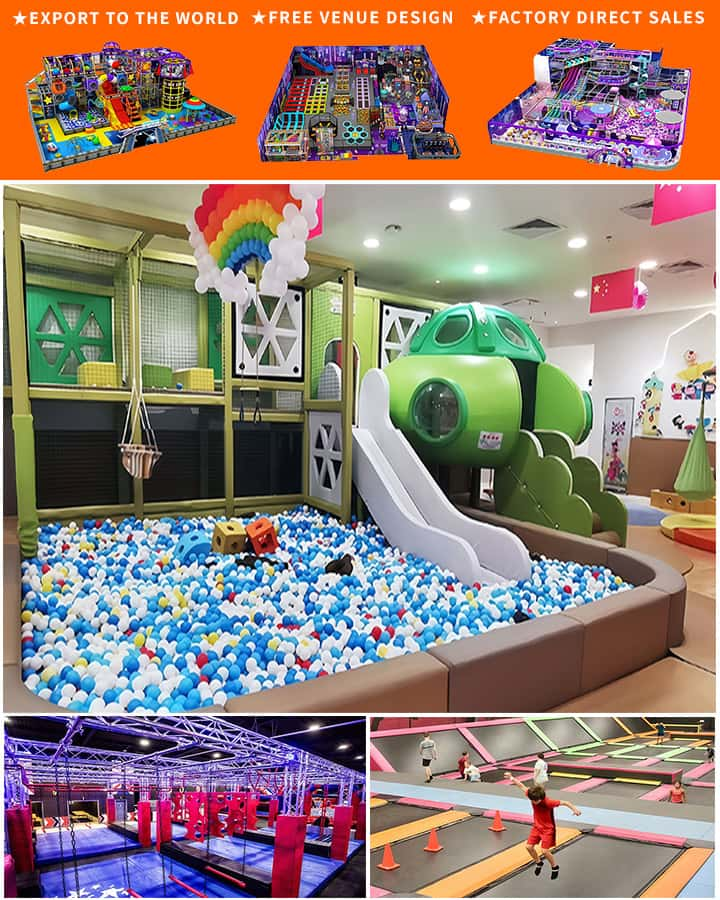Creating an engaging and safe indoor play area for kids can be a fun and rewarding endeavor. Whether you are setting up a play space at home, in a daycare, or at an indoor playground, having the right equipment is essential. This ultimate guide will walk you through various types of kids’ indoor play area equipment that will keep young ones entertained and active.
1. Climbing Structures
One of the most popular pieces of indoor play equipment is climbing structures. These come in various forms, including jungle gyms, rock walls, and vertical ladders. Climbing structures help improve kids’ strength, coordination, and confidence. Make sure they have soft mats underneath to cushion any falls.
2. Slides
Slides provide endless fun and are often found as part of larger multi-component play structures. They come in different sizes, shapes, and materials, such as plastic or metal. Some slides even feature spiral designs or multiple lanes to add variety and excitement.
3. Trampolines
Indoor trampolines are a fantastic way for children to expend energy while improving their balance and motor skills. Look for models with safety enclosures to prevent accidental jumps off the trampoline. Make sure there’s enough ceiling height to avoid bumping heads.
4. Ball Pools and Ball pits
 Ball pools and ball pits are a hit among the younger crowd. These colorful, shallow pools filled with plastic balls offer endless hours of fun. They encourage sensory exploration and physical activity. Choose non-toxic and BPA-free balls for added safety.
Ball pools and ball pits are a hit among the younger crowd. These colorful, shallow pools filled with plastic balls offer endless hours of fun. They encourage sensory exploration and physical activity. Choose non-toxic and BPA-free balls for added safety.
5. Interactive Toys and Games
Interactive toys like building blocks, puzzles, and interactive whiteboards stimulate children’s minds while keeping them engaged. These educational games enhance cognitive skills, problem-solving abilities, and creativity. Consider magnetic building tiles or digital learning tablets for a mix of tactile and virtual play.
6. Soft Play Equipment
Soft play areas are crucial for safety and comfort. Foam mats, soft modular blocks, and inflatable play structures allow kids to tumble, jump, and roll without risk of injury. These areas are especially useful for toddlers who are just learning to navigate their surroundings.
7. Gymnastics Equipment
For the budding gymnast, consider installing bars, balance beams, and mini trampolines. Such equipment helps develop strength, flexibility, and balance. Ensure that these items are age-appropriate and installed securely to avoid accidents.
8. Arts and Crafts Stations
An arts and crafts station provides a quieter, yet equally stimulating activity. Stock it with crayons, markers, colored paper, glue, and other crafting supplies. This corner encourages creativity and fine motor skill development.
9. Role-Playing Areas
Kids love to imitate adults. Set up a role-playing area with costumes, kitchen sets, doctor kits, and tool benches. These pretend play setups foster imagination, social skills, and understanding of different roles in society.
10. Books and Story Corners
A cozy reading nook with bookshelves filled with storybooks creates a serene environment for quiet time. Add bean bags, rugs, and good lighting to make this corner inviting for children who enjoy stories and independent reading.
Safety First: Key Considerations
When selecting indoor play area equipment, safety should always be a priority:
- Material Safety: Opt for non-toxic, durable materials that meet safety standards.
- Supervision: Always supervise young children during playtime.
- Maintenance: Regularly check equipment for wear and tear and clean it to maintain hygiene.
- Space: Ensure there’s ample space around each piece of equipment to prevent collisions and overcrowding.
Creating an exciting indoor play area requires a blend of fun and functional equipment tailored to the needs and interests of the children using the space. With careful planning and attention to safety, you can design an indoor oasis that brings joy and developmental benefits to kids of all ages.




